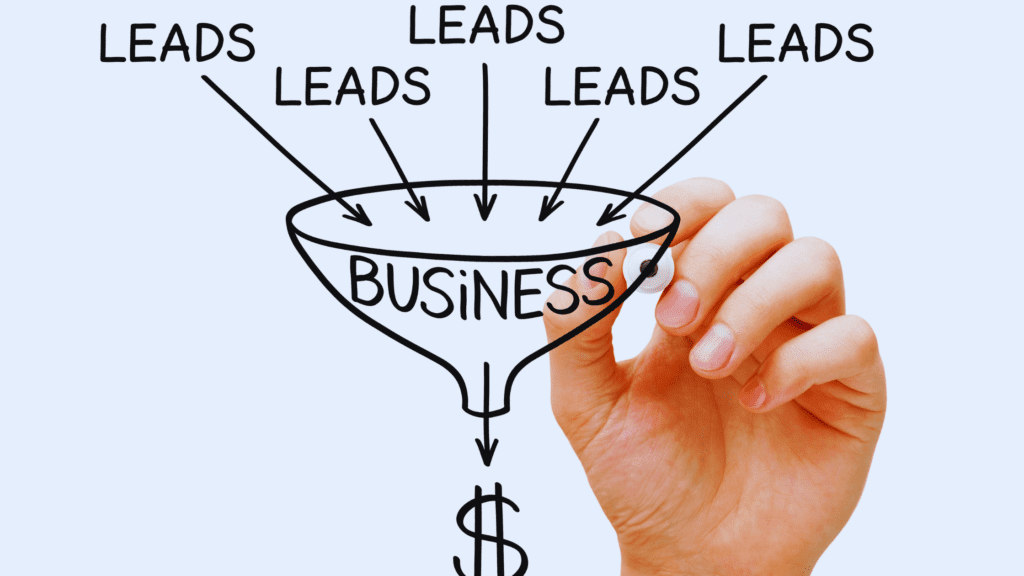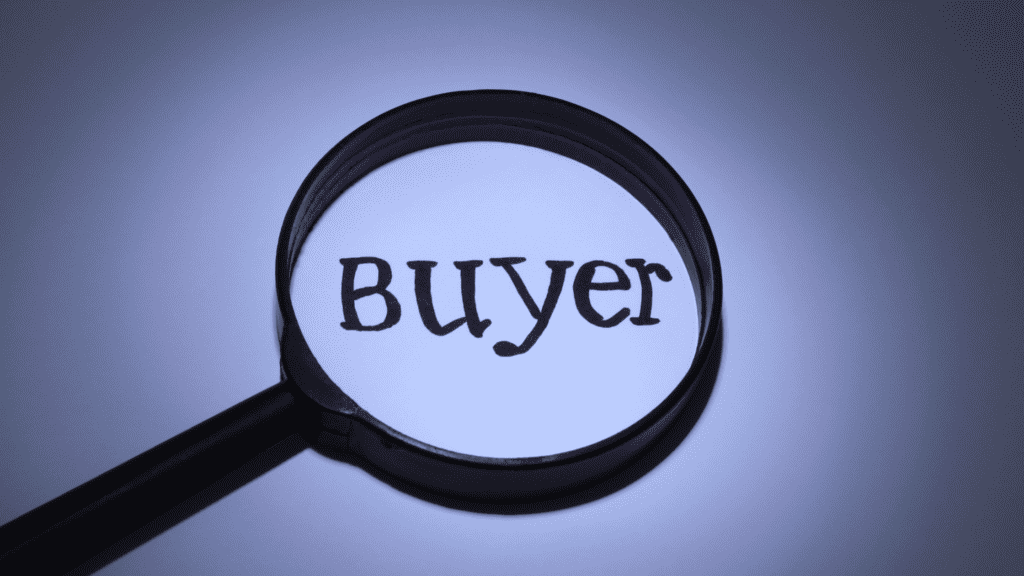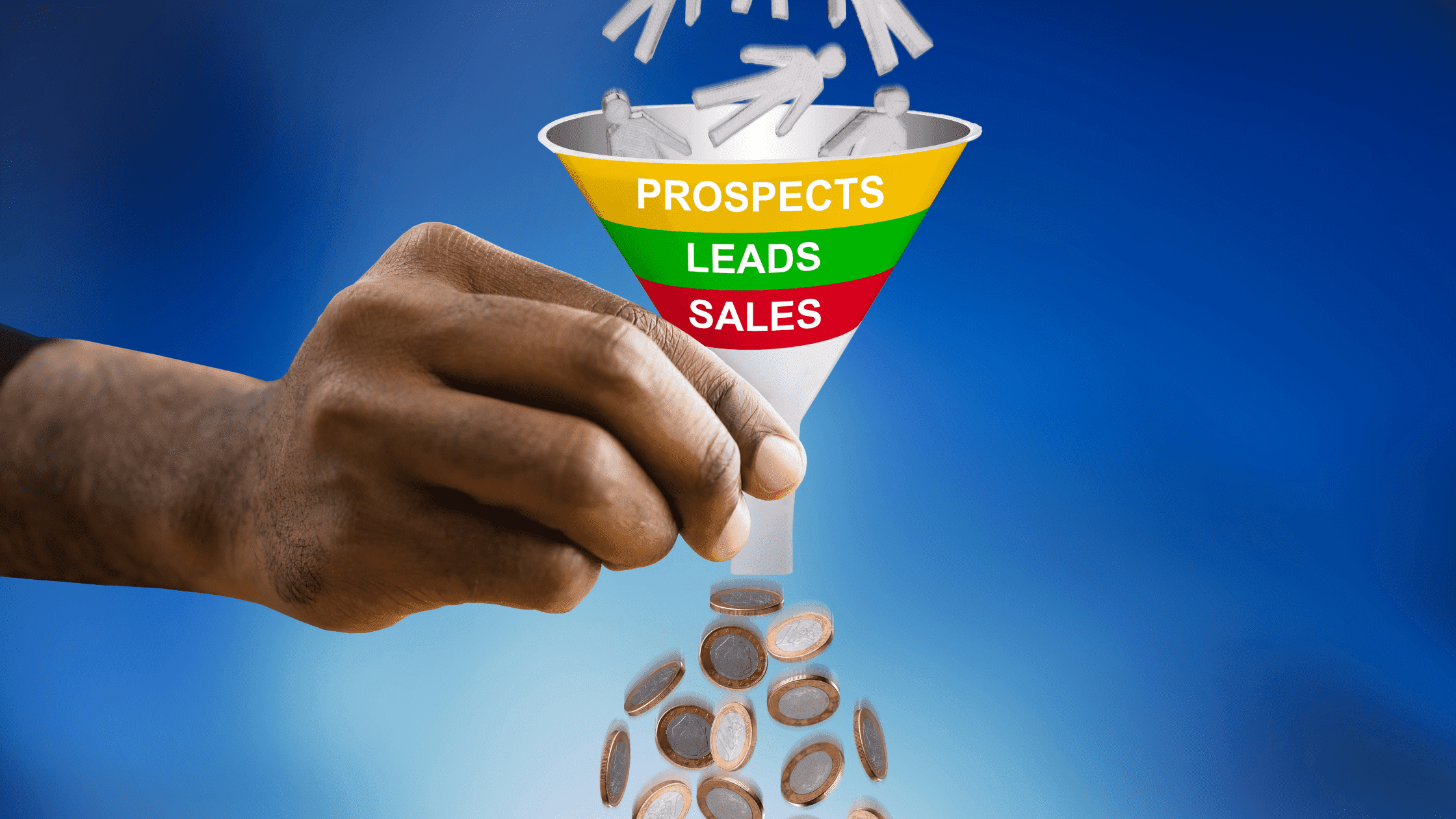In this article, we’ll go over why you should focus on generating sales qualified leads. We’ll also discuss how to increase the quality of your leads so that they easily convert into customers and business opportunities.
Most companies want more leads. The only problem is that more leads do not always mean more business.
Nevertheless, most companies work with just leads as the ultimate goal for their marketing efforts and as the starting point for the sales team.
Unfortunately, this almost always leads to the sales team complaining about the quality of the leads as the marketing-generated leads are not always ready to talk business.
What Are Marketing Leads?
When I meet B2B companies for the first time, there is almost always a disagreement internally about what is meant by leads. Here are some ways in which the teams define leads:
- Contact information for someone who has downloaded something from the website
- A person who filled in a contact form on the website
- A person who downloaded the price list
- Contact information of someone who signed up for a webinar
- The company name of someone who visited the website
- A company that is included in the “target group/ wishlist”
- Contact information of people who have heard about the business and want to talk about a potential deal
- Contact information of someone who wants to buy the products within 3 months
The confusion occurs when there is no common definition or clarity over what one is really striving for.
Many marketing teams work on generating leads for sales and do everything they can within their budget to make it happen. But when the leads reach the sales team, it can be frustrating when the contacts are not interested in proceeding further.
For more clarity, you should therefore divide the leads into different categories. There must be an agreement on the type of leads for which you would optimize your web presence.
Is collecting the contact information of someone in the target group enough? Or should it be the contact information of someone in the target group who is ready to buy?
At KISS Investments, we recommend that you look at the deals that could result from the leads rather than the number of leads. This means to measure the leads that generate some form of business or request for quotes. This type of lead is called a Sales Qualified Opportunity (SQO).
Different Leads Types

The following are the different types of business leads:
Prospect vs Leads
Prospects are visitors who have not actively entered their contact information. You can still manage to identify them with the help of a CRM system such as HubSpot. Their smart tools can identify the IP address of your visitor and you can understand which company the visitor most likely belongs to.
You may not know which individual has visited your website. But these tools are often linked to a database of decision-makers and can therefore present a list of people linked to the company, such as a marketing manager, CFO, etc.
The tools have a number of features that help you segment your visitors according to their behavior on the website (such as the pages they have visited) or business criteria (such as turnover and number of employees).
In addition to segmentation, you can set up alerts so that the right person at your company receives a notification when an interesting prospect visits your website. You can also integrate the system with third-party tools such as Slack, Salesforce, Microsoft Office 365, Mailchimp, Google Analytics, etc.
This allows you to set up a flow that sends your prospects directly into your CRM system or sales tool which is great for streamlining your process.
It would be even better if your marketing and sales team can put in a joint effort to attract decision-makers from a list of companies that are your ideal customers. Making sure that your website attracts and identifies these visitors can in itself be a sub-goal for your inbound work.
Information Qualified Lead
An informational lead is a person whose contact information is available. For example, a person who has filled in a form on your website after reading the content that is tailored to those who are at the beginning of their buying journey.
This type of lead is sometimes called Information Qualified Leads (IQL). The person is relatively unfamiliar with your company, products, or services and usually has a long way to go before they become a customer.
In this phase, it is about building trust in the relationship. You do this by showing that your company has answers to the questions that the potential customer may have during this part of the process.
Marketing Qualified Lead
A Marketing Qualified Lead (MPL) is a lead that is early in the buying process. There is still a greater probability of the lead turning into a customer compared to other leads based on how the content is consumed.
This means that they could have visited a certain page on the website, downloaded a guide, or registered for a webinar. There is no clear buying signal but an indication that the person is interested in the subject matter and wants to learn more about it.
Qualified marketing leads are particularly interesting when the person is from a company that matches your target group. If your MQL does not belong to your primary target group, the contact can still be relevant.
With the help of content, your marketing team can work on educating and qualifying leads until the person is ready to talk to a salesperson or representative from your company.
In general, MQLs are types of business leads your marketing team would spend the budget on to educate, inspire and guide towards a potential business opportunity.
There is also a difference between MQL and SQO. A lead that clicked on an ad on social media is different from a lead that searched for the information on the search engine. Therefore, it is important to get to know your own target group and understand what works the best in terms of content, channels, and messaging.
Just generating MQL is relatively easy and can sometimes be done by advertising on a social network like LinkedIn. But getting qualified marketing leads that are really interested in becoming customers requires a completely different strategy.
Lead Scoring

A common method for identifying an MQL is to monitor how committed or interested the contact is. This can be done with the help of Lead Scoring, where you are awarded points based on the different activities performed by the person.
When your MQL has reached a certain level of points and is ready to discuss a possible solution or to talk to a representative from your company, it becomes a Sales Qualified Lead (SQL).
There are both pros and cons to Lead scoring. Before you introduce a points system, it is important to have a clear strategy for your lead generation.
Keep in mind that a person who does not click around or earn points can still be a great customer. If you rely only on Lead Scoring, you risk missing out on business opportunities.
At this stage, a very important and often forgotten process also comes in – the transferring of leads.
Your marketing and sales teams must agree on the criteria, and it is also a good idea to write an SLA (Service Level Agreement). Such an agreement should include:
- What defines a qualified lead for both the marketing and sales team?
- How many of these are the marketing team responsible for generating?
- How is the sales team going to handle these valuable leads?
Sales-Qualified Lead
Sales Qualified Leads (SQL) are the leads that your sales team has accepted as qualitative leads. They should therefore be followed up with direct contact.
In most cases, this means that the person may have performed one of the following actions:
- actively filled in a form on your website
- requested a consultation
- ordered samples
- requested a demo
Including qualified leads for sales in the lead generation optimizes your sales process. If you skip SQL (and go directly from lead to a customer), your sales team risks spending unnecessary time on the qualification of leads that do not have the potential or maturity to become customers.
You also risk the reputation of your brand by giving the person a negative perception of your business. This is because your salespeople may try to sell them products or services when they have not shown any interest in becoming a customer.
If very few sales-qualified leads convert into customers, it indicates that you need to make a clear selection earlier in the buying process (and the sales process). You may have to process your leads in a more effective manner before they become qualified leads for sales.
How To Identify Qualified Leads That Are Not Yet SQLs

It can be a challenge to identify those leads that your sales team needs to engage with and offer help. Because earlier during the sales process, it’s about helping – not selling.
Here are some examples of how systems like HubSpot can be used for qualifying leads that have not reached out to the company:
An MQL Visits The Contact Page, Pricing Page, Or Customer Case Study
If the person visits sales-qualifying content, you can get your system to send a notification to the sales team showing that the lead is interested but has not decided to get in touch. Maybe a person from the sales team can help and guide them through the sales process.
An Ideal Customer Visits The Website
The visitor is not sales-qualified in any way but can still be worth reaching out to in a helpful manner. Get the system to send a message to the person in your team who is best suited for this particular customer and include the entire history of the customer’s visit to the website.
A Lost Customer Returns To Your Website
Your sales team has already been in contact with a lead but did not close the deal at that time. Send a notice to the team that the person has now chosen to return to the website. The situation may be different now.
An Existing Customer Is Interested In A New Product/ Service
If an existing customer visits a page for a service or product that they have not yet purchased – send a notice to the responsible sales team member.
Sales Qualified Opportunity
Sales Qualified Opportunity (SQO) are the contacts that become actual business opportunities in your CRM system.
It is the most desirable qualification and where your salespeople want to drive all your leads to. But the way to get there can be completely different based on what it is your company is selling.
Sometimes a lead can be an SQL for months or years before an actual business opportunity arises. At other times, the process takes just a few hours or minutes.
It is completely controlled by the person’s individual circumstances and the conditions during their own buyer’s journey. The road to business is usually not predictable and the journey involved in building a new customer relationship can vary between individuals.
Why Are SQOs Important?
I usually recommend companies put a little extra emphasis on SQOs.
This is partly because it identifies valuable leads that are actually interested in buying. It also provides opportunities to optimize both content and the sales process where it makes the most difference to the business.
If you also monitor where you are getting leads from that requested a quote, you are able to optimize the entire marketing process to get more of these types of business leads.
Therefore, pay special attention to the channels and campaigns where your SQO comes from when you do your analysis. You may find patterns that reveal the information that made the person interested in your products or services. This information can be invaluable in creating content in the future.
Of course, you should keep track of how many SQOs become customers so that you can optimize this phase of the decision-making process.
This can be done through content on and off the website that helps your customers make their own decisions. Tools like HubSpot can help you with that so that you can see where the leads that qualify to become SQOs come from.
Converting Leads Into Customers

When a person approves an agreement or a quote, he/she becomes a customer. Now it’s about creating a long-term relationship and making your existing customer a repeat customer, and preferably also a valuable ambassador for your company.
By influencing customers to make recurring purchases, you increase the chance of making more sales in your company. The step to additional sales should be short in this case because you are now a trusted supplier.
Getting through the sales cycle faster means that you get more deals done during the same financial year, which is what most growing companies are trying to achieve.
Therefore, it is important that you think carefully about how you can strengthen the relationship with your existing customers and keep the commitment and communication to be active.
It is also important that you regularly analyze how your customers first came in contact with your company. By using behavioral data, you can learn a lot about:
- how your customers actually search for your company
- what they are interested in
- how long it takes before they make their initial contact
By having a CRM that is linked to your website, you can get this type of information.
For example, HubSpot can show the correlation between the website, sources of leads, and sales. This is valuable information that can be used to optimize both your sales and marketing efforts in the future.
Ambassadors
Most salespeople can attest to the fact that the existing contacts are the best way to sell the next deal. Investing in your existing contacts and giving them good reasons to get involved in your company’s success is a smart strategy.
Inbound marketing often involves turning customers into ambassadors and taking advantage of the relationship on social media, at networking events, or other gatherings.
What has helped your existing customers to turn into ambassadors? What can you do to get more customers to become one?
Conclusion
We have reviewed the different types of leads and contacts. In HubSpot, the steps are called Lifecycle Stages. By keeping track of the people in the different steps, you can adapt your communication so that it helps them with where they are in their buyer’s journey.
Here are the different stages of the lifecycle of leads:
- market-qualified leads will become sales-qualified leads
- sales-qualified leads will become business opportunities
- business opportunities will become customers
- customers will become ambassadors
The more fine-tuned your digital ecosystem is, the more synchronized your sales and marketing team will be in your joint effort to capture leads and work with them. This will help to accelerate the growth of the company.
